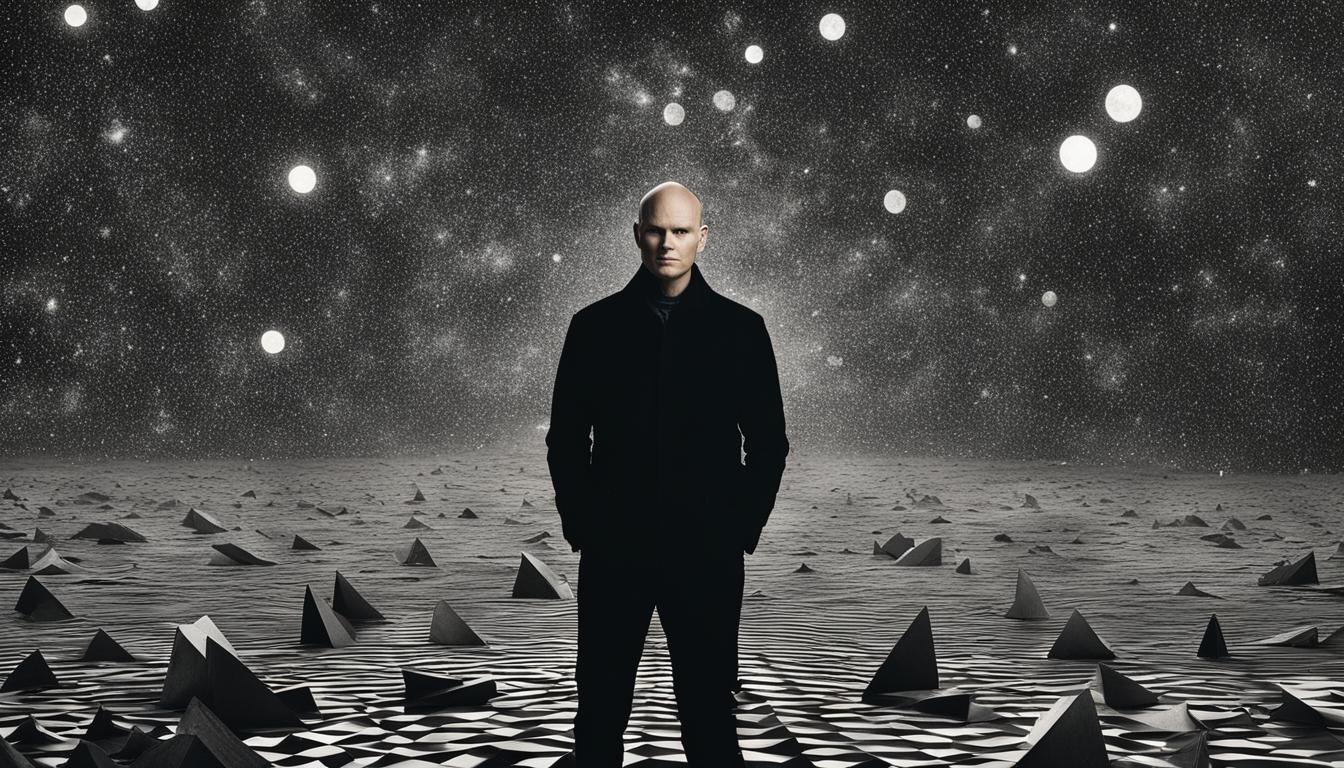In this section, we will provide a comprehensive audiobook review of “All the Light We Cannot See” by Anthony Doerr. As an award-winning novel, we will delve deep into the narrative, themes, and characters, giving you an in-depth understanding of why this book has gained critical acclaim. Stay tuned for our analysis of this captivating story, perfect for audiobook lovers everywhere.
About the Author
Anthony Doerr is an American author whose work has been celebrated for its stunning imagery and masterful storytelling. Born and raised in Cleveland, Ohio, Doerr now lives in Idaho with his family. He is the author of several acclaimed books, including “All the Light We Cannot See,” which won the Pulitzer Prize for Fiction in 2015.
Doerr’s writing style is known for its poetic language and vivid descriptions, evoking a strong sense of place and time. He often explores themes of memory, identity, and the human experience. His work has been translated into over forty languages and has received numerous awards and honors.
Doerr’s career started in journalism, writing for a variety of publications before shifting to fiction. He has said that his background in journalism has helped him with his research and attention to detail when writing historical fiction, such as “All the Light We Cannot See.”
If you are a fan of historical fiction that transports you to another time and place with its rich, descriptive prose, then Anthony Doerr is an author to add to your reading list.
Synopsis
In “All the Light We Cannot See,” Anthony Doerr weaves together the stories of two young individuals drawn into the conflict of World War II. Marie-Laure LeBlanc, a blind girl living in Paris, and Werner Pfennig, a German boy fascinated by science and technology, are brought together in a moving tale of war, friendship, and survival.
The plot moves back and forth in time, with Marie-Laure’s story taking place before and during the German occupation of France, while Werner’s story occurs during his training in Hitler Youth and later as a German soldier on the front lines. Their paths eventually intersect in the French town of Saint-Malo, where they must confront the brutal realities of war and face their own moral dilemmas.
Main Characters
- Marie-Laure LeBlanc: a young blind girl living in Paris with her father
- Werner Pfennig: a German boy with a talent for fixing radios
- Reinhold von Rumpel: a German sergeant obsessed with finding a legendary diamond
- Etienne LeBlanc: Marie-Laure’s uncle and a veteran of World War I
Themes
The novel explores themes of survival, resilience, and the bonds that can form between people despite their differences. It also examines the moral ambiguity of war, and the impact it can have on both individuals and society as a whole.
“Open your eyes and see what you can with them before they close forever.”
Through the experiences of its main characters, “All the Light We Cannot See” offers a poignant and insightful meditation on the nature of humanity and the power of hope.
Audiobook Narration
The audiobook version of “All the Light We Cannot See” adds a new dimension to the novel with excellent audiobook narration. The audiobook version is narrated by Zach Appelman, who brilliantly brings the story to life with his engaging and emotive voice.
The audiobook version provides an immersive experience for listeners, allowing them to fully immerse themselves in the world of the novel and follow the story as it unfolds. The narration quality is exceptional, and the voice actors involved do an excellent job of bringing each character to life.
| Voice Actor | Role | Description |
|---|---|---|
| Zach Appelman | Multiple Characters | Expertly captures the distinct voices and personalities of each character. |
The narration quality adds a new level of depth to the storytelling experience and makes it easy for listeners to fully engage with the novel. The audiobook version is highly recommended for those who prefer audiobooks or who want to experience the novel in a new and unique way.
Setting and Atmosphere
Anthony Doerr does an exceptional job of creating a vivid and atmospheric setting in “All the Light We Cannot See.” The story takes place during World War II and primarily focuses on the cities of Saint-Malo in France and Essen in Germany. Throughout the novel, Doerr uses intricate sensory details to bring the setting to life, from the smell of the sea in Saint-Malo to the sound of bombs falling in Essen.
The setting is not just a backdrop for the story but a significant part of the narrative. Doerr’s careful attention to the setting allows readers to fully immerse themselves in the world of the novel and understand the characters’ experiences in a more profound way.
The atmospheric description also adds to the overall mood of the novel, which is both haunting and beautiful. Doerr’s prose style is poetic and evocative, imbuing the story with a dreamlike quality that enhances the emotional resonance of the plot.
The image above captures the essence of the atmospheric setting in “All the Light We Cannot See.” The misty seacoast, the old fortified city walls, the narrow streets and medieval architecture, and the eternal spark of hope inside of every human spirit.
Character Development
Doerr masterfully brings his characters to life through subtle and nuanced development, creating a rich tapestry of complex individuals. The protagonist, Marie-Laure, is a young blind girl who learns to navigate the world around her through touch, sound, and her vivid imagination. Through her journey, we witness her curiosity, intelligence, and unwavering courage in the face of adversity.
On the other hand, the antagonist, Sergeant Major Reinhold von Rumpel, is a sharply contrasted character. His motivations are driven solely by personal gain, and his character lacks any sense of humanity or empathy. He is an embodiment of the cruelty and horror of war.
However, Doerr is careful to ensure that his characters are not one-dimensional. He provides insight into the motivations and relationships of even the minor characters, creating a fully-realized and immersive world. As the story progresses, we see characters evolve and change, showing the author’s skill in depicting the fluidity of human nature.
All the Light We Cannot See showcases Doerr’s masterful character analysis, providing a multi-layered and deeply human story.

Writing Style
Anthony Doerr’s writing style in “All the Light We Cannot See” is an undeniable masterpiece. His use of vivid imagery, figurative language, and sensory details make the story come alive. Doerr’s prose is both elegant and accessible, effortlessly drawing the reader into his world. The writing is lyrical and poetic without being overly flowery, making it perfect for both literary and contemporary fiction fans.
One of the unique elements of Doerr’s writing is his ability to weave together different storylines seamlessly. The novel’s dual narrative structure may be disorienting to some at first, but Doerr’s writing ensures that the plotlines merge seamlessly for a satisfying conclusion. His descriptive language, whether of the landscapes, characters, or emotions, is evocative and vivid, leaving a lasting impact on the reader.
Doerr’s writing is both moving and thought-provoking, aimed at challenging readers to reflect on the human condition. His imagery, character dialogue and emotional depth transport the reader beyond the words on the page, into a world of historical fiction that is so compelling and captivating. “All the Light We Cannot See” stands apart not just for its unique storyline but for Doerr’s writing style – one that is unassuming, powerful and unforgettable.
Themes and Symbolism
“All the Light We Cannot See” by Anthony Doerr explores several themes and employs various symbols to enhance the narrative’s depth and meaning. One such theme is the power of storytelling and its ability to bring people together, even in the midst of war. The novel uses Werner’s fascination with radios and broadcasts, and Marie-Laure’s love for books to illustrate this theme.
Another prominent theme is the fragility of humanity and the consequences of war on individuals, society, and the natural world. Through the accounts of Werner and Marie-Laure, Doerr highlights the devastating impact of World War II on people’s lives, hopes, and faith. The novel also depicts how the war disrupted the ecosystem and destroyed monuments and cities, leaving scars that endure long after the war ended.
The symbolism in “All the Light We Cannot See” adds another layer of complexity to the novel’s themes and characters. For instance, the sea of flames that belonged to the museum in Paris highlights the pursuit of power and wealth and the destructive effects of greed. The sea is also a metaphor for life, renewal, and sacrifice, as seen through Etienne’s final scene on the beach. Other symbols, such as the radio, the snail, and the bird, convey ideas of communication, perseverance, and freedom, respectively.
Through its themes and symbolism, “All the Light We Cannot See” invites readers to reflect on the human experience, the power of empathy, and the importance of hope in times of strife. Doerr’s writing style, combined with the audiobook’s narration, transports listeners to a world of both beauty and terror, leaving a lasting impression on those who immerse themselves in this Pulitzer Prize-winning novel.
Historical Accuracy
The level of historical accuracy in “All the Light We Cannot See” is a testament to Anthony Doerr’s exceptional research and attention to detail. The novel is set during World War II and takes place in France and Germany, depicting the lives of a blind French girl and a German boy who become entangled in the war.
The All the Light We Cannot See audiobook provides vivid descriptions of the era, giving listeners a realistic understanding of the historical context surrounding the characters. Doerr’s writing honors the time period and provides a compelling narrative that accurately portrays the gravity of events during World War II.
Comparison of Real Events and Fiction
While All the Light We Cannot See is a fictional story, the novel incorporates historically accurate events and settings. Doerr’s attention to detail is evident in his descriptions of the war’s effects on everyday life and his portrayal of the Nazi regime’s brutality.
However, the novel also includes fictional characters and events that are not historically accurate. Doerr admits in interviews that he took liberties with certain details to serve the narrative. Despite this, the overall historical accuracy of the audiobook is impressive and makes for a compelling listening experience.
“Doerr’s novel is a work of art that blends real events with fictional characters and plotlines. The historical accuracy of the novel adds to its power and makes it a memorable reading experience that stays with readers long after the final page.”
Pacing and Structure
Anthony Doerr’s “All the Light We Cannot See” is a masterclass in pacing analysis and narrative structure, seamlessly weaving together multiple storylines and timelines to create a cohesive and engaging narrative.
The novel is structured as a series of short chapters, each one jumping between different perspectives and time periods. This allows the reader to see how the characters’ lives intersect and how their decisions impact one another over time.
The novel’s pacing is deliberate and calculated, with moments of tension and action balanced by quiet introspection and reflection. This creates a sense of balance and tension throughout the book, keeping the reader engaged and invested in the story.
Additionally, the narrative structure of “All the Light We Cannot See” allows for the exploration of larger themes and ideas, such as the nature of good and evil and the impact of war on individuals and communities.
The novel’s carefully orchestrated pacing and structure are key to its success, making it a masterful work of historical fiction that will captivate readers from beginning to end.
Emotional Impact
The emotional resonance of “All the Light We Cannot See” is undeniable. The novel takes the reader on a journey through the lives of its main characters, each struggling with their own personal challenges amid the backdrop of World War II.
One of the most impactful themes in the novel is the power of human connection. Despite the chaos and destruction of war, the characters form deep and meaningful bonds with one another that ultimately shape their fates. The moment when Werner and Marie-Laure finally meet in person is particularly poignant, as the reader has been rooting for their reunion throughout the novel.
“Open your eyes and see what you can with them before they close forever.” -Anthony Doerr
Doerr’s prose masterfully captures the emotional weight of the story, bringing the characters to life in a way that resonates deeply with readers. Through moments of triumph and tragedy, “All the Light We Cannot See” is a novel that leaves a lasting impact on its readers, reminding us of the power of hope, connection, and resilience.

Critical Reception
Upon its release in 2014, “All the Light We Cannot See” quickly garnered critical acclaim for its engaging story, vivid characters, and beautiful prose. The novel went on to win numerous prestigious awards, including the Pulitzer Prize for Fiction in 2015.
“Stupendous…[an] extraordinary novel of the Second World War…A tour de force of storytelling.” –The New York Times Book Review
Reviews of the book universally praised Doerr’s ability to evoke the atmosphere of wartime France and Germany, as well as his intricate character development and complex themes. The novel has since been translated into over 40 languages and continues to resonate with readers worldwide.
| Publication | Review |
|---|---|
| The Washington Post | “A novel to live in, learn from, and feel bereft over when the last page is turned.” |
| The Guardian | “Doerr’s epic delicately illuminates the agony of wartime.” |
| The Wall Street Journal | “An expertly told story that will leave you thinking about its characters, and its themes, for weeks […].” |
Comparison to Other Works by Anthony Doerr
“All the Light We Cannot See” is not the only notable work by Anthony Doerr. Let’s take a look at some of his other books and see how they compare.
The Shell Collector
Published in 2002, “The Shell Collector” is a collection of short stories that showcase Doerr’s ability to craft intricate and emotive tales in a condensed format. While it shares some of the same themes as “All the Light We Cannot See,” such as the connection between humanity and the natural world, it differs in its storytelling style and narrative structure.
Memory Wall
“Memory Wall,” published in 2010, is another collection of short stories that examine the power of memory and the effects it has on our lives. Similar to “The Shell Collector,” it showcases Doerr’s mastery of prose and his ability to create vivid and captivating characters.
Cloud Cuckoo Land
Doerr’s most recent work, “Cloud Cuckoo Land,” published in 2021, is a sprawling epic that explores the connections between humanity and the natural world, the power of storytelling, and the enduring nature of love. While it shares some similarities with “All the Light We Cannot See,” such as its multi-perspective narrative and lyrical prose, it also differs in its genre and scope.
While all of Anthony Doerr’s works share some similarities with “All the Light We Cannot See,” they each have their own unique style, themes, and storytelling structures that set them apart. Regardless, they are all worth exploring for anyone who enjoys exceptional writing and captivating stories.
Impact and Legacy
Since its publication in 2014, “All the Light We Cannot See” has had a profound impact on literature. Anthony Doerr’s Pulitzer Prize-winning novel has captivated readers worldwide with its hauntingly beautiful prose, intricate storytelling, and vivid depiction of World War II.
One of the most significant impacts of “All the Light We Cannot See” has been its legacy as a literary masterpiece. The novel has been widely praised by critics, earning it a place among the most celebrated works of modern literature.
The legacy of “All the Light We Cannot See” is evident in its continued popularity and relevance in today’s literary landscape. The novel continues to inspire readers and writers alike, serving as a model for storytelling excellence and enduring literature. Its impact on literature will undoubtedly be felt for generations to come.
Reader Recommendations
If you enjoyed “All the Light We Cannot See” by Anthony Doerr, we recommend checking out these similar titles:
| Book Title | Author | Themes |
|---|---|---|
| The Nightingale | Kristin Hannah | World War II, female protagonists, sisterhood, courage, resilience |
| The Book Thief | Markus Zusak | World War II, death, loss, friendship, storytelling |
| The Alice Network | Kate Quinn | World War I, female spies, redemption, courage, friendship |
| The Guernsey Literary and Potato Peel Pie Society | Mary Ann Shaffer and Annie Barrows | World War II, community, friendship, literature, resilience |
| The Tattooist of Auschwitz | Heather Morris | World War II, survival, love, courage, sacrifice |
These titles share similar elements with “All the Light We Cannot See” and have earned praise for their compelling stories and memorable characters.
Conclusion
In conclusion, “All the Light We Cannot See” by Anthony Doerr is a masterpiece that is both captivating and emotional. The audiobook version of the novel is expertly narrated, allowing listeners to fully immerse themselves in the story. Doerr’s writing style is unique and beautiful, with rich descriptions that bring the setting and characters to life.
The themes and symbolism incorporated in the novel provide a deeper level of meaning and significance, and the historical accuracy is commendable. The pacing and structure of the story are well-crafted, contributing to an engaging and enjoyable reading experience.
“All the Light We Cannot See” has received critical acclaim and rightfully so. It is a novel that leaves a lasting impact on readers and has secured its place as a significant work in the literary world. For those who enjoyed this audiobook, we recommend similar titles such as “The Nightingale” by Kristin Hannah and “The Book Thief” by Markus Zusak.
All in all, “All the Light We Cannot See” is a must-read for anyone who appreciates beautifully crafted storytelling and impactful themes. We highly recommend this novel and believe it is a timeless work that will continue to resonate with readers for years to come.



